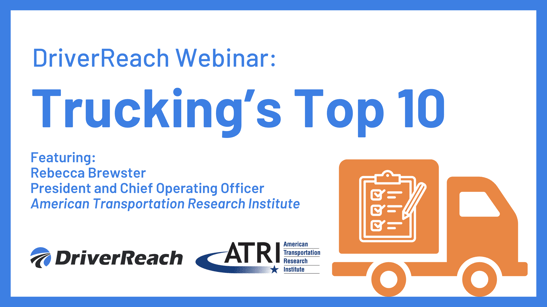A recent American Transportation Research Institute (ATRI) study has opened the eyes of many in the CDL trucking industry to the drawbacks and limitations of driver detention. Based on more than 1,900 surveys conducted in 2014 and 2018, the ATRI study found that driver detention has steadily increased over the past four years and has negatively impacted driver productivity, compliance, and compensation.
Driver detention occurs when a CDL driver is delayed at the beginning or the end of their delivery route. Most carrier contracts build in 2 hours at the pickup and 2 hours at delivery to give clients time to load and unload the trucks. If the 2-hour window isn’t enough, drivers are delayed getting back on the road, which can set them off of their schedule for subsequent deliveries. For this reason, carriers charge shippers a detention fee for every hour drivers are delayed.
When drivers are detained at the beginning or end of their deliveries, they can start to rush, aka speed, to make up for lost time, which puts the safety of drivers and others on the road at risk. This is why driver detention and scheduling are such critical topics for ATRI and trucking industry thought leaders. Over the past few years, conversations about increasing efficiency and positively impacting the driver shortage have all come back to the safety of CDL drivers and others on the road.
Some additional highlights from the ATRI study include:
- Delays of six or more hours increased more than 27% between 2014 and 2018.
- Female drivers are 83% more likely to be delayed 6+ hours than male drivers.
- The number of drivers who said that customers were responsible for a delay in pick up or delivery in the past year increased nearly 40%.
- The average detention fee charged by carriers is $63.71 per hour, compared to the average operating cost of $66.65 per hour.
Simply put, if customers and shippers are going to continue to delay drivers and put a strain on an already overworked CDL trucking infrastructure, something needs to change. Additionally, charging shippers a detention fee isn’t doing much to stop these delays or even cause them to trend downward. Instead of approaching driver detention from a reactive standpoint, carriers and drivers should try to work with customers and shippers to determine a proactive course of action.
Examples of proactive action include:
- Rewarding customers and shippers who stick to timelines and keep drivers on the road.
- Prioritizing routes and/or customers that are more efficient.
- Educating customers on shipping best practices to decrease driver retention.
If your team is looking to positively impact driver detention and do your part to ensure drivers stay on time and safe, DriverReach can help. The modern CDL applicant tracking system goes beyond recruiting logistics to ensure drivers are compliant and up to date on all safety measures and regulations. You can learn more about DriverReach here.
Stay up to date on CDL trucking trends! Be sure to check out the DriverReach blog or follow us on LinkedIn for other relevant articles and head over to our webinars page for an up-to-date list of upcoming events and on-demand recordings.
Interested in seeing DriverReach’s modern Recruiting Management System in action? Request a demo!




